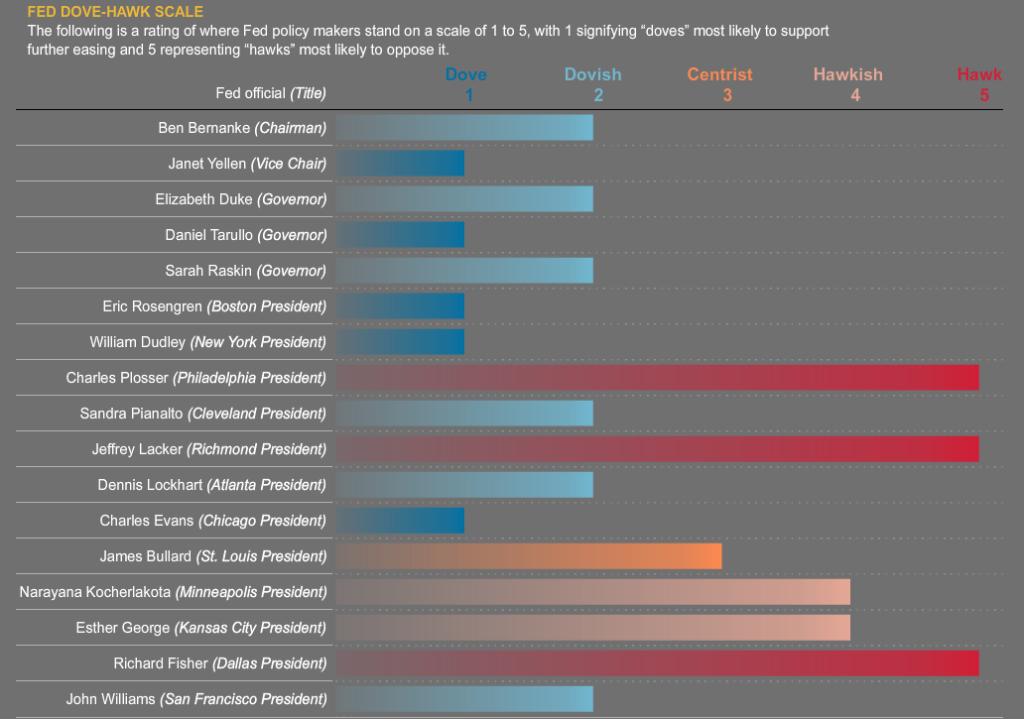The jobs report came in better than expected today, leading the usual barrage of speculation that the Fed will be tightening sooner rather than later.
Guess what? Not gonna happen.
I try to avoid Fed bashing. There is really nothing worse than a Monday-morning quarterback, and in any event, complaining about the Fed’s policies is counterproductive. It’s a distracting waste of time.
That doesn’t mean that I support Yellen & Company, mind you. I just try to keep my emotions out of the mix when handicapping the Fed’s next move.
The general consensus seems to be that the Fed will aggressively start to raise rates starting late in the first quarter of next year, and the Fed itself seems to be forecasting an aggressive timeline for hikes. By the end of 2017, the Fed’s policy-setting committee expects the fed funds rate to be 3.75%.
That seems awfully aggressive to me. Assuming quarter-point rate hikes, the Fed would have to raise rates at 15 consecutive meetings. If they start in March of 2015, they could theoretically hit that number by the first quarter of 2017. But the bond market seems to be telling a different story if you look at the spread between traditional Treasury yields and inflation-protected Treasury (or TIPS) yields. The market is pricing in annual inflation of just 1.9% over the next ten years.
I don’t see the ten-year Treasury yielding more than 3.75% by 2017, particularly with rates as low as they are across Europe and Japan. That means that the Fed would be inverting the yield curve (raising short-term rates above long-term rates), which is generally a leading indicator of a recession.
We probably will have a recession sometime in the next two years (see October Portfolio Outlook) as part of the normal ebb and flow of the economy. But I don’t think the Fed is reckless enough to force one unless inflation gets out of control…and again, the bond market is telling us that that isn’t happening any time soon.
But here’s the real trump card and a major reason why I believe the Fed will remain dovish for a lot longer than most Fed watchers expect: The hawks are retiring.
(Thomson Reuters created the graphic; click here to visit the original.)
Dallas Fed President Richard Fisher and Philadelphia Fed President Charles Plosser—two of the three most hawkish governors—will be stepping down in 2015 and will most likely be replaced by more dovish appointees by President Obama. That will leave Jeffrey Lacker as the last of the reliable hawks.
Bottom line: The Fed will not be tilting in a more hawkish direction any time soon.
Charles Lewis Sizemore, CFA, is the chief investment officer of the investment firm Sizemore Capital Management. Click here to receive his FREE weekly e-letter covering top market insights, trends, and the best stocks and ETFs to profit from today’s best global value plays.


[…] are going to be exceptionally low for a long time to come. I touched on this last week in “Ignore the Jobs Report: The Fed Won’t Be Tightening Any Time Soon,” and I recommend you give that article a read if you haven’t […]
[…] me start by saying that I don’t expect short-term rates to rise any time soon. As I wrote last week, the composition of the Fed’s board of governors will be changing next year, and two of the three […]
[…] have news for the bond bears out there: The Fed won’t tightening any time soon. The recent drop in bond yields has happened even while the Fed has effectively stopped its […]